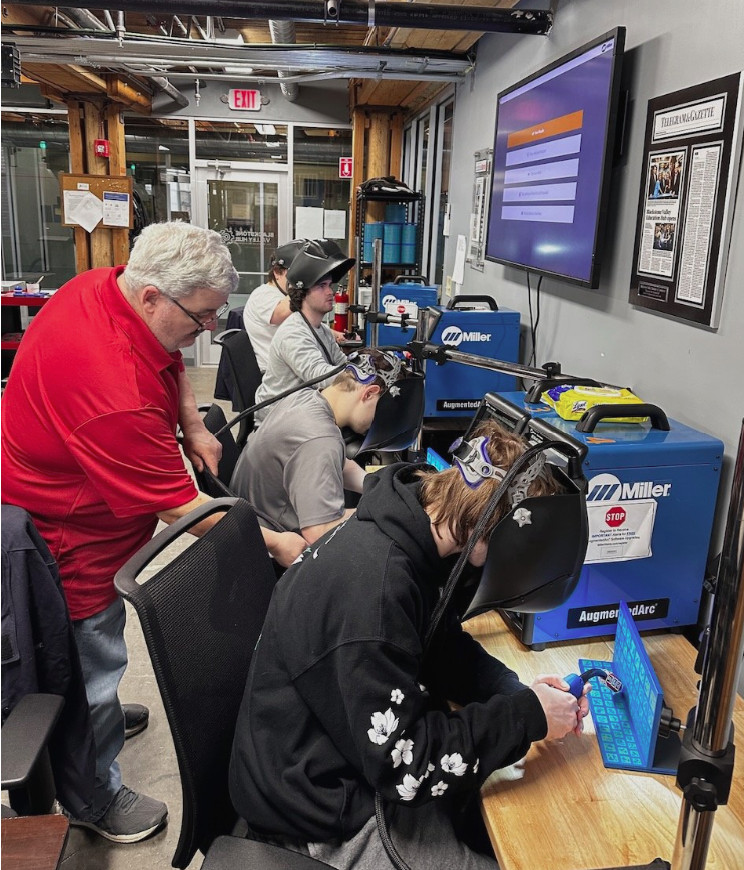Workforce development programs have become critical for both employers and employees in today's rapidly evolving job market. Employers are facing labor shortages and technology advancements that are changing the way they work, so they are in dire need of skilled workers that can jump right in with minimal onboarding. On the other side, job seekers and existing employees need training on cutting-edge technologies. In this dynamic environment, successful workforce development programs bridge the gap between local industry demands and available candidates who need training. There are multiple strong examples of this happening in Massachusetts that AET Labs is fortunate to have been a part of.
Workforce Development in Massachusetts
The Massachusetts state administration has strongly supported workforce development initiatives throughout the Commonwealth, with groups dedicated to aligning state and local programs, policies, and resources to fuel job growth and address employer demand for talent.
One helpful resource for workforce development programs is regional labor marketing blueprints, which comprehensively detail industry and occupational priorities for workforce investments specific to seven regions within the state.
Massachusetts has also provided funding to support the establishment and growth of workforce development programs, including the Massachusetts Skills Capital Grant. The Massachusetts Skills Capital Grant provides funding for equipment and renovations that has contributed to many adult and career training programs.
The Career Technical Initiative (CTI) is an initiative of the Massachusetts Workforce Skills Cabinet (WSC) which aims to address the persistent demand for workers in manufacturing, construction, and trades by expanding training capacity for Massachusetts residents at Chapter 74 schools.
And a federal grant from the U.S. Department of Defense helped fund the MassBridge program, a training and career pathway program for manufacturing jobs.
What Makes a Successful Workforce Development Program
Successful workforce development programs make an impact in the community. Strong partnerships with industry organizations and local employers are critical for the best outcomes. Getting input from employers on their hiring needs and skills gaps throughout the development of the program will ensure the training provided is most relevant to help employers and the people being trained.
Successful workforce development programs are also accessible for people who need to learn the skills conveniently and are low-cost or free. People also benefit from a curriculum that is not intimidating, so they can quickly learn along with a clear path toward employment opportunities after the training.
Example: Blackstone Valley Hub for Workforce Development
The Blackstone Valley Hub for Workforce Development aims to positively contribute to a collaborative workforce pipeline by providing a centralized location for students to gain the technical and employability skills needed to meet the region's needs. It was established in 2018 as the non-profit and business development arm of the Blackstone Valley Chamber of Commerce (BVCC).

The organization offers training in multiple disciplines to meet the needs of the local manufacturing industry, including:
- Welding
- CNC Machining
- Robotics
- Computer-Aided Design
- Industrial readiness
They have a workshop fully equipped with CNC lathes and mills, Universal Robots cobots, Miller Augmented Arc welding training systems, laser cutters, 3D printers, and metrology. And, they recently acquired 4,400 square feet area to expand. They will add a 16-station electronics training lab and an 8-station PLC training lab.
The Blackstone Valley Hub for Workforce Development programs have helped people get apprenticeships, industry-recognized certifications, and jobs. They run an apprenticeship program in conjunction with Milford High School that has been so successful that they will expand it. Graduates have been offered positions in Algonquin Industries and Waters Corp.
Their BVEXCEL Manufacturing 1 and 2 programs successfully graduated students with MACWIC qualifications. They also run a JobCorps training program where students graduate with NIMS qualifications. They have a 90+% success rate in placing graduates in employment for that program. In addition, they develop customized programs for local industry partners, such as blueprint reading, GD&T, and lean manufacturing.
We're thankful for local workforce development programs that are successfully helping to fill hiring and skills gaps. If you're applying for a workforce development grant or have been awarded a grant, AET Labs can help you identify what industry-relevant equipment and technologies to include in your training programs. Contact us to get started!


